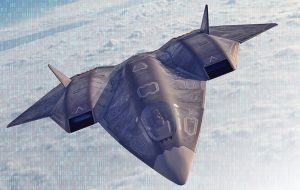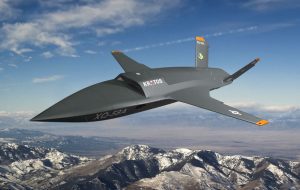Strategists and military researchers often focus on warfare within three primary domains: land, sea, and air. In each of these theatres, combatants strive to defeat their opponents and clear the way for the political objectives driving the conflict.
However, a fourth domain, frequently overlooked in discussions of warfare, is the underground. This domain, which has been utilised as a means of combat against enemy forces for millennia, has recently been employed to asymmetric effect against some of the world’s most powerful conventional forces.
This often-forgotten realm utilises tunnels to create an axis of advancement beneath the surface. While it may not share the glamour of other domains, it has often been employed to decisive effect throughout recorded history.
Tunnel warfare refers to combat conducted in tunnels, caves, or underground fortifications. This includes the construction of subterranean facilities for defensive or offensive purposes, as well as the use of natural caves and man-made underground structures for military purposes.
Tunnels can be used to mine fortifications and infiltrate enemy territory, achieving the element of surprise. Defensively, they can be employed to set ambushes, conduct counterattacks, and transport troops from one battlefront to another in a concealed and protected manner. Additionally, tunnels can serve as shelters for combatants and non-combatants against enemy attacks. The presence of tunnels, or even the suspicion of their existence, significantly impacts all aspects of a mission. It has taken time for armies to grasp the tactical implications of tunnels, from equipment adjustments to small unit engagements. The operational and strategic ramifications of underground warfare, however, remain underexplored. Addressing the urgent need for a more operational and strategic approach to underground threats involves three key planning steps: first, conducting more accurate assessments of underground threat risks; second, understanding how tunnels impact the broader mission; and third, making a concerted effort to anticipate innovative uses of tunnel warfare by both state and non-state actors.
Today, the ancient tactic of underground warfare has re-emerged as a rapidly spreading global threat. It has evolved into a global phenomenon, leveraging strategic, technological, and asymmetric conflict backgrounds. Tunnels are ideally suited for asymmetric warfare; even if defenders are defeated, the cost of breaking through tunnel defences is steep for the victors in terms of time, manpower, and expense. The rise of tunnel warfare as a tactical, operational, and strategic issue necessitates that armies incorporate underground combat operations into their planning, training, preparation, logistics, and equipment development to meet new requirements.

Ancient Uses and Contemporary Threats
The use of tunnels, chambers, and underground fortifications during conflicts and wars is not a new phenomenon. Throughout history, underground tactics have posed significant challenges to conventional armies, creating a multifaceted panorama of tunnel warfare across time and geography. Tunnelling has been a common aspect of warfare for thousands of years.
Large defensive walls around cities, when besieged or invaded, often had tunnel systems dug to facilitate escape and deliver water or supplies from outside enemy lines. Various actors have utilised underground movement in myriad ways, from smuggling to concealing ammunition, protecting civilians and fighters, ambushing enemy forces, kidnapping, launching weapons, controlling territory, and maintaining command and control under attack. This diversity has complicated the development of military doctrine regarding the use of the underground domain in warfare.
Ancient besieged forces used tunnelling operations to weaken well-fortified positions. This typically required engineers to build long passages beneath walls or other obstacles to undermine fortifications and breach defensive positions.
One of the earliest examples of this technique is depicted on Assyrian reliefs thousands of years old, showing attackers scaling ladders to breach the walls of an Egyptian city while others are seen tunnelling into the foundations of the walls.
Roman armies also heavily relied on advanced engineering techniques, such as placing arches in the tunnels they built during sieges. Roman defenders mastered the art of digging counter-tunnels to intercept those used by attackers, and when an enemy tunnel was breached, it would be filled with caustic smoke.
World War I is renowned for the advent of trench warfare and the use of mining tunnels for underground combat, where opposing forces clashed from dug-in positions.
With machine guns raging above troops unable to advance over battlefields, the only remaining method to undermine the enemy was to dig extensive tunnels beneath their trenches and fill them with explosives. Ypres in war-torn Belgium was the site of hundreds of tunnels dug by British and German miners. The harrowing tales of underground combat provide one of the most terrifying aspects of that dreadful war, with entire British and German regiments decimated by tunnel tactics.
As warfare increasingly relied on aircraft in the 20th century, military strategists once again turned to tunnels, recognising that they were undetectable from the sky and protected from bomb blasts.
During World War II, Japanese forces in occupied areas of the Pacific constructed extensive tunnel networks to make their positions nearly impervious to Allied air and naval bombardment. During amphibious assaults, American and Allied forces had to contend with a maze of Japanese tunnels. Ultimately, they resorted to using high explosives to collapse tunnel entrances, trapping thousands of Japanese troops inside.
The tunnels not only shielded Vietnamese fighters from overwhelming American airpower but also facilitated guerrilla attacks, becoming a cornerstone of their warfare strategy. These tunnels, some large enough to house hospital facilities and barracks and strong enough to withstand anything short of a nuclear blast, remain popular tourist attractions today. American soldiers, or “tunnel rats,” who ventured into these tunnels armed only with knives and pistols, became adept at navigating the tunnel networks. However, there were never enough trained soldiers to diminish the tunnels’ effectiveness significantly. During the Cold War era, to counter the substantial air and satellite advantage of the United States and NATO, the Soviet military dug underground passages beneath major population centres. These underground systems provided a degree of shelter for civilians in the event of a nuclear attack and allowed for the movement of military forces without detection from constant aerial surveillance. Today, these tunnels are used in efforts to defend Ukraine.

Challenges of Tunnel Warfare
Fighting underground is vastly different from combat above ground. Underground facilities are typically narrow, making it difficult to deploy manned combat vehicles.
If vehicles are used, they can cause air contamination from engine exhaust. Therefore, soldiers must carry weapons, ammunition, and medical supplies on their backs and evacuate wounded comrades themselves. The risks of underground combat include fire, venomous insects, human waste, and the environment itself.
Any action taken by friendly forces underground can worsen the environment. Typically, underground facilities are dark with poor air circulation, leading to the accumulation of smoke and chemical fumes from weapon use, the amplification of sounds from concussive blasts, and overall discomfort and anxiety.
Additionally, radio waves do not travel well in tunnels, leading to poor communication between fighters and their commanders.
An American Army publication on the dangers of underground warfare noted that “everything from weapon fire and explosions to carbon dioxide from soldiers’ breathing can contribute to an increasingly hazardous environment.” The publication warned that, in such conditions, soldiers might be seriously injured or die before even making contact with the enemy. An expert stated, “If you go deep underground and there’s no good airflow, you’ll die from suffocation. Training and education are key, and without them, you could find yourself trapped in a very old kind of warfare that you might not even think could be used today.” The only solace is that these effects apply equally to both tunnel attackers and defenders. One method armies use to address the potential for underground warfare is early training. In 2019, the US Army issued a manual for underground operations. The army trains for underground combat on the Korean Peninsula, where they might need to enter caves and underground complexes to eradicate North Korea’s weapons of mass destruction. The British Army, the French Army, and NATO also train their soldiers for underground combat.
US defence officials are also considering what the complex realm of underground warfare will mean for American forces in future scenarios. A military leader wrote in an article about underground operations, “Our adversaries have adapted their capabilities against our weaknesses by expanding their use of underground facilities. Now, there are more than 10,000 of these ‘tactical tunnels’ worldwide, growing larger and more complex.” Another leader stated, “Our forces must learn to navigate and fight inside tunnels in any future conflict; this is a growing aspect of warfare.”
Recently, the US Army constructed an underground training range to simulate fighting in tunnels and confined spaces. Wolf Amaker, an official at the centre, said, “In stressful situations, you always fall back on what you know. If you know your training and are well-trained, then in stressful situations, you’ll revert to that training. This is exactly what we want soldiers to do.” Amaker added, “The facility trains soldiers to fight in situations that could send them underground. When you fight and win and clear an area, the first thing that grabs your attention is finding a piece of cloth hanging on the wall. When you move this cloth, a hole in the wall appears, leading somewhere. When you move a bed and some wooden planks, a hole in the ground appears, leading somewhere. This is a new approach, but it addresses an old situation.”Tunnels often force attacking nations to resort to extremely destructive measures: B-52 bombers, heavy artillery bombardment, airstrikes, flamethrowers, and flooding with sewage. However, these types of weapons and counter-tunnel measures are sometimes used without a clear end goal in mind, and their impact, although highly destructive, tends to be short-term. Despite this, underground warfare remains under-researched, poorly understood, and often underestimated. Even nations that have faced underground threats have been hesitant to develop doctrines, strategies, and tactical guidelines, partly because underground threats take many forms and evolve over time.
Unique Equipment for Underground Combat
Underground combat involves unique equipment needs that current gear does not meet. This necessitates developing new tools or modifying existing ones to cater to the specific requirements of subterranean environments, enhancing the ability of Marines or soldiers to see, shoot, and communicate underground.
First, they must be able to see in total darkness, however, current night vision optics become largely ineffective in environments with no ambient light and little to no temperature variations.
Moreover, rifles are impractical in the narrow confines underground, thus units forced to fight underground from Okinawa to Vietnam and Afghanistan have abandoned rifles in favour of pistols when clearing tunnels.
Furthermore, compact machine guns equipped with lights might be an ideal solution, offering automatic fire and small size. Working underground also requires wired communications since VHF radios, which rely on line-of-sight, will fail in environments containing labyrinthine tunnels.
Additionally, marines and soldiers need adequate hearing protection, preferably over-ear and active, since noises resulting from gunfire and explosions are significantly amplified underground. However, forces also need to be able to hear to communicate effectively. Other items to consider include devices to measure air quality, helmets designed to protect against the unique hazards of underground environments, air tanks, and mapping kits for deep underground facilities where compasses and GPS do not work.
Armies use technology to address the challenges of the underground battlefield. Some technologies are borrowed from other uses, such as M40 field protection masks for poor air quality. Heavy equipment like sledgehammers, plasma cutters, and breaching tools can overcome locked doors and obstacles underground.
Other technologies have been developed to support tunnel operations, such as wheeled shields used by US soldiers in Korea to provide mobile cover in featureless tunnels where there is no place to hide from bullets and shrapnel. In 2017, the US Army’s Rapid Equipping Force developed a wireless pedometer using frequency-hopping transmitters, allowing commanders to know the distance their soldiers had travelled in underground mazes.
One of the most promising technologies for underground combat is the use of robots and drones, which the US Army utilises to detect tunnels or deliver munitions and explosives. The Defense Advanced Research Projects Agency (DARPA) is currently developing drones focused on subterranean exploration, working autonomously, navigating uneven terrain, and communicating with their human operators. The history of tunnel warfare in the twentieth century does not offer much encouragement regarding the ease of underground combat in the future. Experts in modern warfare, Colonel William Collins and Major John Spencer, wrote in an article for the Association of the United States Army, “In the coming years, underground combat will appear more frequently during armed conflict, and with the trend towards more urban and suburban fighting, it will become harder to avoid fighting underground.” “It is foolish and fanciful to believe that soldiers will be able to avoid the war reaching underground,” they added.●
» By: Retired Colonel Eng. Khaled Al-Ananzah (Advisor and Trainer in Environmental and Occupational Safety)













